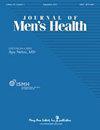运动能力与男性青年运动能力等级之间的关系
IF 0.6
4区 医学
Q4 Medicine
引用次数: 0
摘要
本研究的目的有两方面:(i)分析运动能力(即一个人精通不同大运动技能的能力)与表现训练期间生理和心理反应的感知用力等级(RPE)之间的关系;(ii)比较运动能力高和低的参与者之间的RPE。48名男性青年(22.01±2.43岁)参加了本研究。参与者被随机分成若干组,每组3人,进行25分钟的小方比赛(守门员+ 2 × 2 +守门员),并收集RPE。然后,通过六个测试来评估运动能力,评估三个主要部分:稳定性(横向跳跃和移动平台)、运动能力(立定跳远和穿梭跑)和操纵性(踢球和投球的速度)。运动能力与RPE呈负相关(r = - 0.64; p <0.001)。此外,运动、稳定性和操作成分与RPE呈负相关(all, p <0.05)。此外,通过比较运动能力低水平组和高水平组,我们观察到显著更高的RPE值(p <0.001; d = 0.32)。这项研究的结果表明,运动能力水平较高的人在运动时的RPE可能较低。这些信息对教练来说是有价值的,因为运动能力水平的提高可能会潜在地导致场上表现的提高。本文章由计算机程序翻译,如有差异,请以英文原文为准。
Association between motor competence, and the rating of perceived exertion in male young adults
The purpose of this study was two-fold: (i) to analyze the relationship between motor competence (i.e., a person’s ability to be proficient in different gross motor skills) and the rating of perceived exertion (RPE), which represents the physiological and psychological responses during training, in young adults, and (ii) to compare RPE between participants with high and low motor competence. Forty-eight male young adults (22.01 ± 2.43 years) participated in this study. Participants were randomly divided into several teams of three players to perform a small-sided game for 25 min (Goalkeeper+ 2 × 2 + Goalkeeper) in which the RPE was collected. Then, motor competence was assessed through six tests assessing three main components: stability (Jumping Sideways and Shifting Platforms); locomotor (Standing Long Jump and Shuttle Run), and manipulative (Velocity of Ball Kicking and Throwing). Motor competence was negatively associated with RPE (r = −0.64; p < 0.001). Moreover, locomotor, stability, and manipulative components were negatively associated with RPE (all, p < 0.05). Furthermore, upon comparing groups with low and high levels of motor competence, we observed significantly higher RPE values (p < 0.001; d = 0.32) in the low motor competence group. The findings from this study suggest that individuals with higher levels of motor competence may report a lower RPE during exercise. This information is valuable for coaches as improving levels of motor competence may potentially lead to increases in on-field performance.
求助全文
通过发布文献求助,成功后即可免费获取论文全文。
去求助
来源期刊

Journal of Men's Health
Medicine-Urology
CiteScore
0.70
自引率
28.60%
发文量
153
审稿时长
10 weeks
期刊介绍:
JOMH is an international, peer-reviewed, open access journal. JOMH publishes cutting-edge advances in a wide range of diseases and conditions, including diagnostic procedures, therapeutic management strategies, and innovative clinical research in gender-based biology. It also addresses sexual disparities in health, life expectancy, lifestyle and behaviors and so on. Scientists are encouraged to publish their experimental, theoretical, and descriptive studies and observations in as much detail as possible.
 求助内容:
求助内容: 应助结果提醒方式:
应助结果提醒方式:


